Contents�
Preface�
Notation in Brief�
1. The Time and Frequency Description of Signals �
1.1 Introduction �
1.2 Time Description of Signals �
1.3 Frequency Description of Signals �
1.4 Simple Calculation Tricks �
1.5 Bandwidth Equation �
1.6 AM and FM Contributions to the Bandwidth �
1.7 Duration and Mean Time in Terms of the Spectrum �
1.8 The Covariance of a Signal �
1.9 The Fourier Transform of the Time and Frequency Densities �
1.10 Nonadditivity of Spectral Properties �
1.11 Classification of Signals �
2. Instantaneous Frequency and the Complex Signal �
2.1 Introduction �
2.2 Reasons for the Complex Signal �
2.3 The Analytic Signal �
2.4 Calculating the Analytic Signal �
2.5 Physical Interpretation of the Analytic Signal �
2.6 The Quadrature Approximation �
2.7 Instantaneous Frequency �
2.8 Density of Instantaneous Frequency �
3. The Uncertainty Principle �
3.1 Introduction �
3.2 The Uncertainty Principle �
3.3 Proof of the Uncertainty Principle �
3.4 The Uncertainty Principle for the Short-Time Fourier Transform �
4. Densities and Characteristic Functions �
4.1 Introduction�
4.2 One Dimensional Densities �
4.3 One Dimensional Characteristic Functions �
4.4 Two Dimensional Densities �
4.5 Local Quantities �
4.6 Relation Between Local and Global Averages �
4.7 Distribution of a New Variable �
4.8 Negative Densities �
5. The Need for Time-Frequency Analysis �
5.1 Introduction �
5.2 Simple Analytic Examples �
5.3 Real Signals �
5.4 Why Spectra Change �
6. Time-Frequency Distributions: Fundamental Ideas �
6.1 Introduction �
6.2 Global Averages �
6.3 Local Average �
6.4 Time and Frequency Shift Invariance �
6.5 Linear Scaling �
6.6 Weak and Strong Finite Support �
6.7 Uncertainty Principle �
6.8 The Uncertainty Principle and Joint Distributions �
6.9 Uncertainty Principle and Conditional Standard Deviation �
6.10 The Basic Problems and Brief Historical Perspective �
7. The Short-Time Fourier Transform �
7.1 Introduction �
7.2 The Short-Time Fourier Transform and Spectrogram �
7.3 General Properties �
7.4 Global Quantities �
7.5 Local Averages �
7.6 Narrowing and Broadening the Window �
7.7 Group Delay �
7.8 Examples �
7.9 Inversion �
7.10 Expansion in Instantaneous Frequency �
7.11 Optimal Window �
8. The Wigner Distribution �
8.1 Introduction �
8.2 The Wigner Distribution �
8.3 General Properties �
8.4 Global Averages �
8.5 Local Averages �
8.6 Examples �
8.7 The Wigner Distribution of the Sum of Two Signals �
8.8 Additional Properties �
8.9 Pseudo Wigner Distribution �
8.10 Modified Wigner Distributions and Positivity �
8.11 Comparison of the Wigner Distribution with the Spectrogram �
9. General Approach and the Kernel Method �
9.1 Introduction �
9.2 General Class �
9.3 The Kernel Method �
9.4 Basic Properties Related to the Kerrkl �
9.5 Global Averages �
9.6 Local Averages �
9.7 Transformation Between Distributions �
10. Characteristic Function Operator Method �
10.1 Introduction �
10.2 Characteristic Function Method �
10.3 Evaluation of the Characteristic Function �
10.4 The General Class �
10.5 Averages �
10.6 The Moment Method �
11. Kernel Design for Reduced Interference �
11.1 Introduction �
11.2 Reduced Interference Distributions �
11.3 Kernel Design for Product Kernels �
11.4 Projection Onto Convex Sets �
11.5 Baraniuk-Jones Optimal Kernel Design �
12. Some Distributions �
12.1 Introduction �
12.2 Choi-Williams Method �
12.3 Zhao-Atlas-Marks Distribution �
12.4 Born-Jordan Distribution �
12.5 Complex Energy Spectrum �
12.6 Running Spectrum �
13. Further Developments �
13.1 Introduction �
13.2 Instantaneous Bandwidth �
13.3 Multicomponent Signals �
13.4 Spatial/ Spatial-Frequency Distributions �
13.5 Delta Function Distribution for FM Signals �
13.6 Gabor Representation and Time-Frequency Distributions �
13.7 Expansion in Spectrograms �
13.8 Spectrogram in Terms of Other Distributions �
13.9 Singular Value Decomposition of Distributions �
13.10 Synthesis �
13.11 Random Signals �
13.12 Numerical Computation �
13.13 Signal Analysis and Quantum Mechanics �
14. Positive Distributions Satisfying the Marginals �
14.1 Introduction �
14.2 Positive Distributions �
14.3 The Method of Loughlin, Pitton, and Atlas �
15. The Representation of Signals �
15.1 Introduction �
15.2 Orthogonal Expansion of Signals �
15.3 Operator Algebra �
15.4 Averages �
15.5 The Uncertainty Principle for Arbitrary Variables �
16. Density of a Single Variable �
16.1 Introduction �
16.2 Density of a Single Variable �
16.3 Mean Values �
16.4 Bandwidth �
16.5 Arbitrary Starting Representation �
17. Joint Representations for Arbitrary Variables �
17.1 Introduction �
17.2 Marginals �
17.3 Characteristic Function Operator Method �
17.4 Methods of Evaluation �
17.5 General Class for Arbitrary Variables �
17.6 Transformation Between Distributions �
17.7 Local Autocorrelation �
17.8 Instantaneous Values �
17.9 Local Values for Arbitrary Variable Pairs �
17.10 The Covariance �
17.11 Generalization of the Short-Time Fourier Transform �
17.12 Unitary Transformation �
17.13 Inverse Frequency �
17.14 Appendix �
18. Scale �
18.1 Introduction �
18.2 The Scale and Compression Operator �
18.3 The Scale Eigenfunctions �
18.4 The Scale Transform �
18.5 Signals with High Scale Content �
18.6 Scale Characteristic Function �
18.7 Mean Scale and Bandwidth �
18.8 Instantaneous Scale �
18.9 Uncertainty Principle for Scale �
18.10 Frequency and Other Scaling �
18.11 Appendix �
19. Joint Scale Representations �
19.1 Introduction �
19.2 Joint Tune-Scale Representations �
19.3 General Class of Tune-Scale Representations �
19.4 Joint Frequency-Scale Representations �
19.5 Joint Representations of Time, Frequency, and Scale �
19.6 Appendix �
Bibliography �
Index �
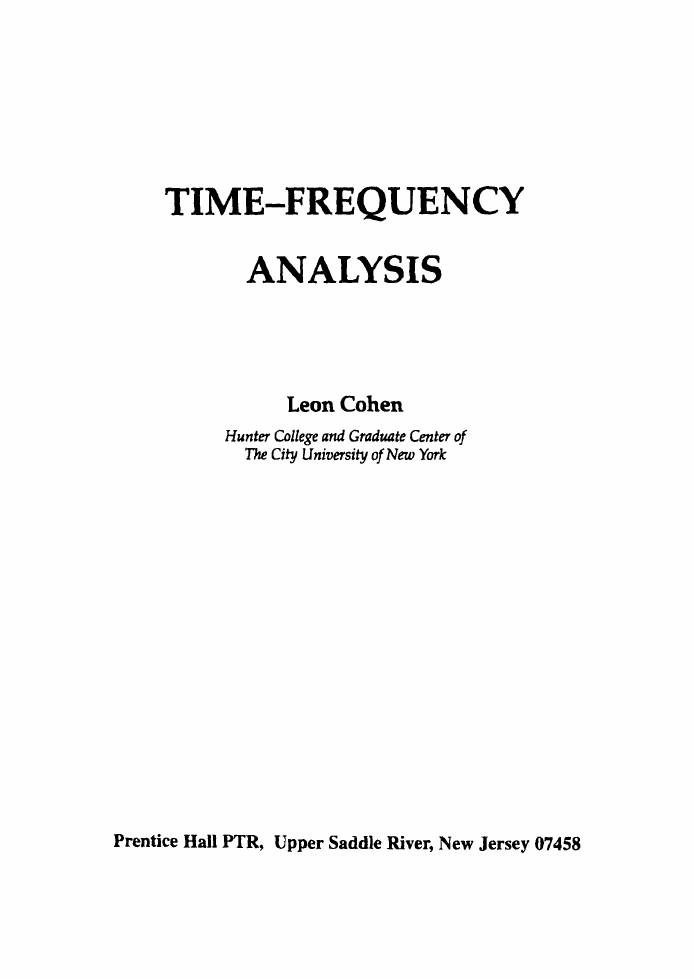
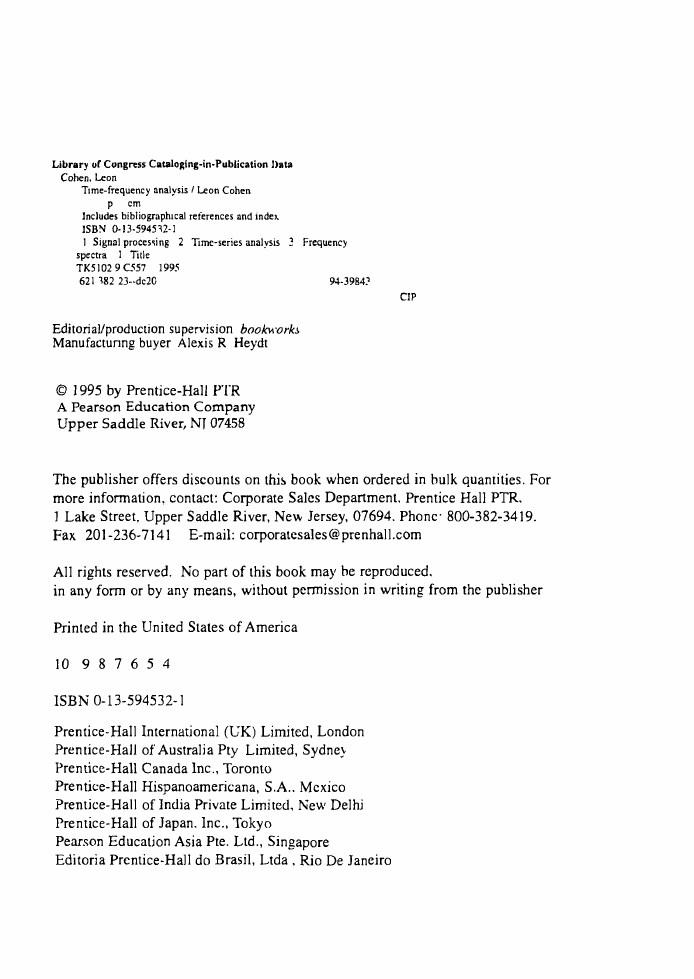


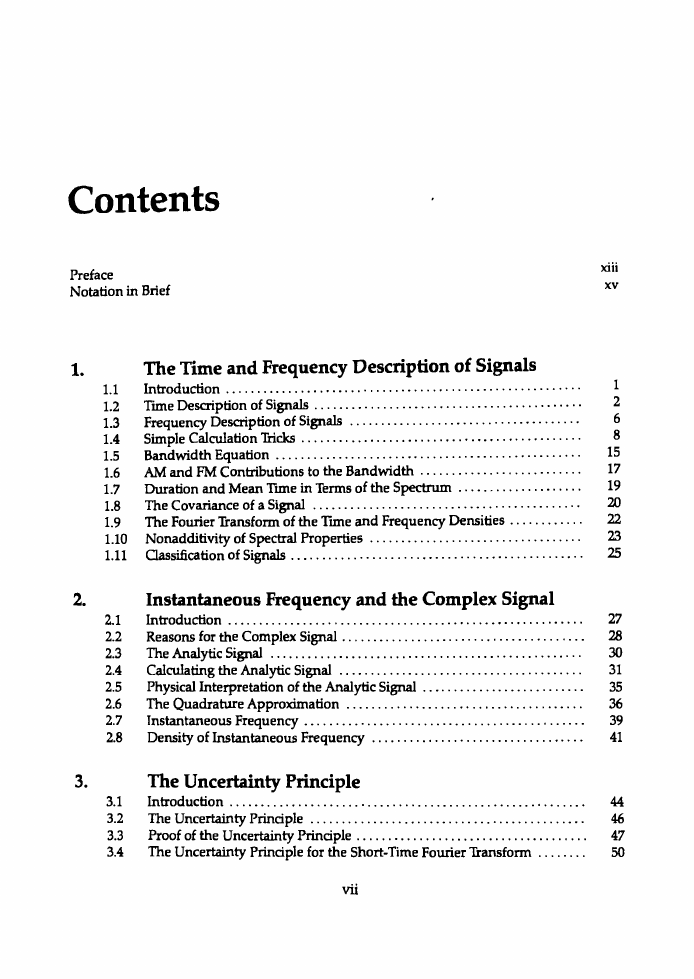
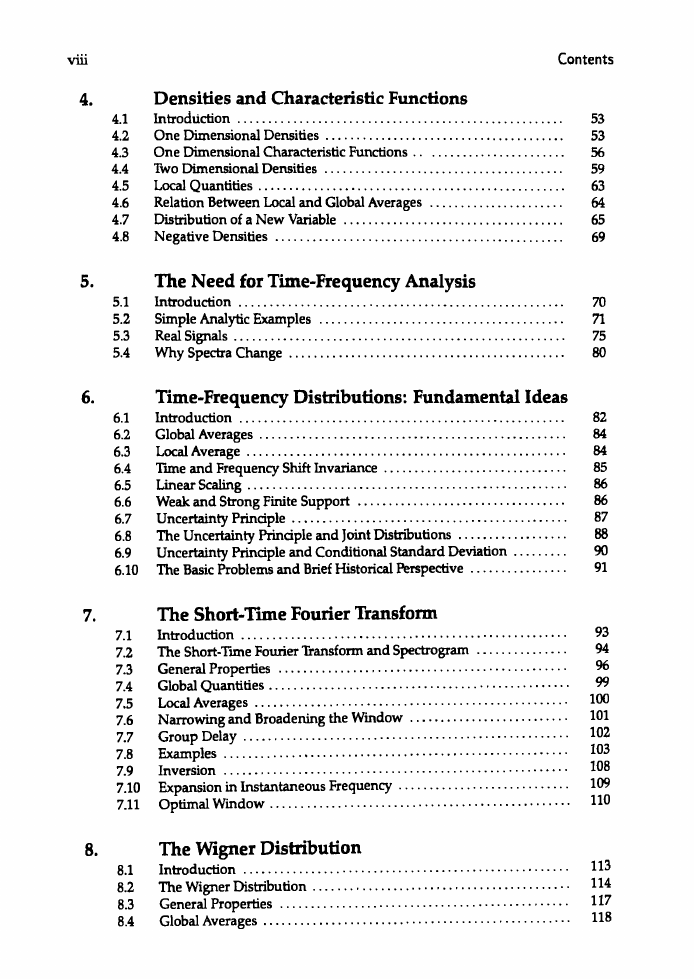
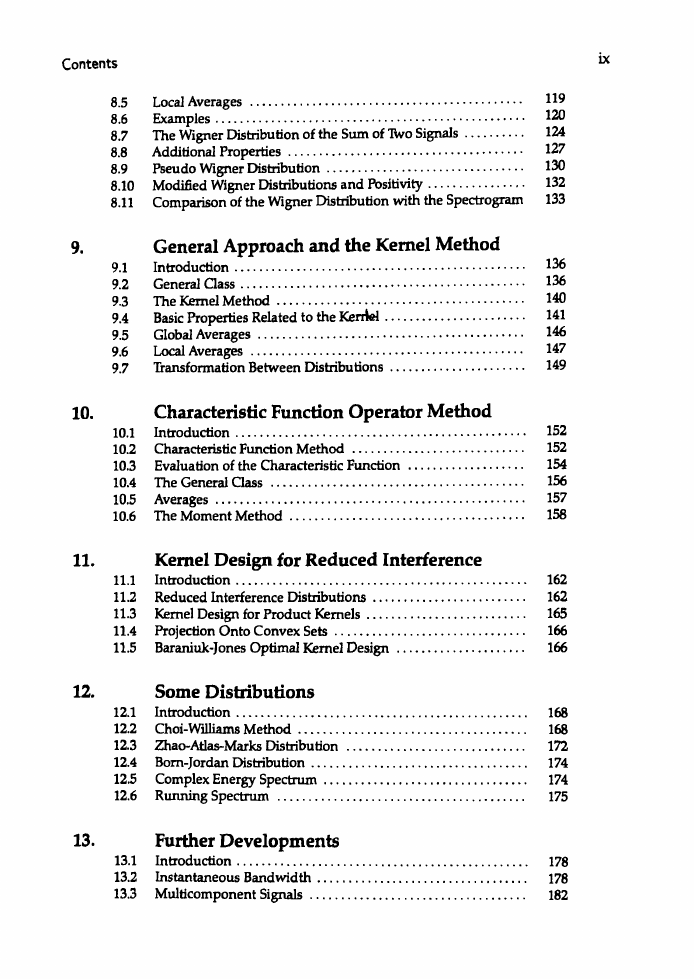









 2023年江西萍乡中考道德与法治真题及答案.doc
2023年江西萍乡中考道德与法治真题及答案.doc 2012年重庆南川中考生物真题及答案.doc
2012年重庆南川中考生物真题及答案.doc 2013年江西师范大学地理学综合及文艺理论基础考研真题.doc
2013年江西师范大学地理学综合及文艺理论基础考研真题.doc 2020年四川甘孜小升初语文真题及答案I卷.doc
2020年四川甘孜小升初语文真题及答案I卷.doc 2020年注册岩土工程师专业基础考试真题及答案.doc
2020年注册岩土工程师专业基础考试真题及答案.doc 2023-2024学年福建省厦门市九年级上学期数学月考试题及答案.doc
2023-2024学年福建省厦门市九年级上学期数学月考试题及答案.doc 2021-2022学年辽宁省沈阳市大东区九年级上学期语文期末试题及答案.doc
2021-2022学年辽宁省沈阳市大东区九年级上学期语文期末试题及答案.doc 2022-2023学年北京东城区初三第一学期物理期末试卷及答案.doc
2022-2023学年北京东城区初三第一学期物理期末试卷及答案.doc 2018上半年江西教师资格初中地理学科知识与教学能力真题及答案.doc
2018上半年江西教师资格初中地理学科知识与教学能力真题及答案.doc 2012年河北国家公务员申论考试真题及答案-省级.doc
2012年河北国家公务员申论考试真题及答案-省级.doc 2020-2021学年江苏省扬州市江都区邵樊片九年级上学期数学第一次质量检测试题及答案.doc
2020-2021学年江苏省扬州市江都区邵樊片九年级上学期数学第一次质量检测试题及答案.doc 2022下半年黑龙江教师资格证中学综合素质真题及答案.doc
2022下半年黑龙江教师资格证中学综合素质真题及答案.doc